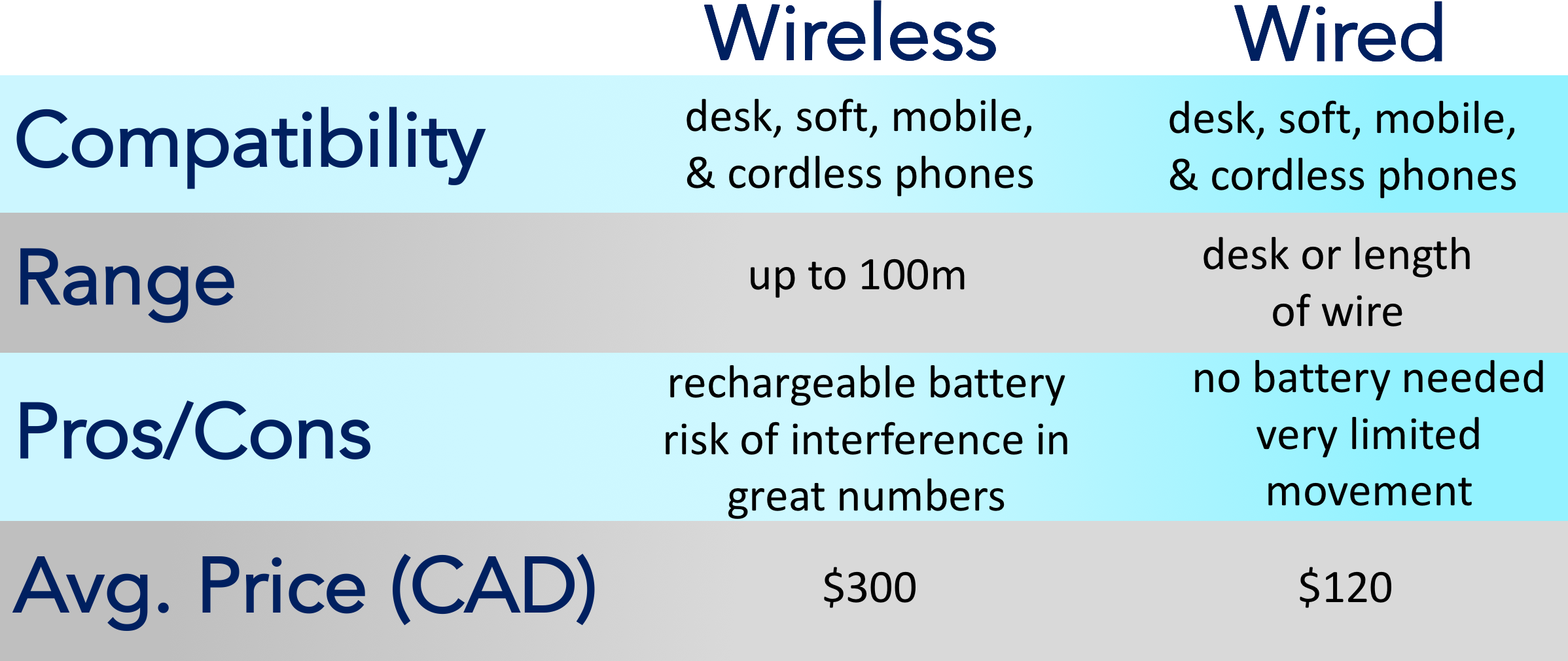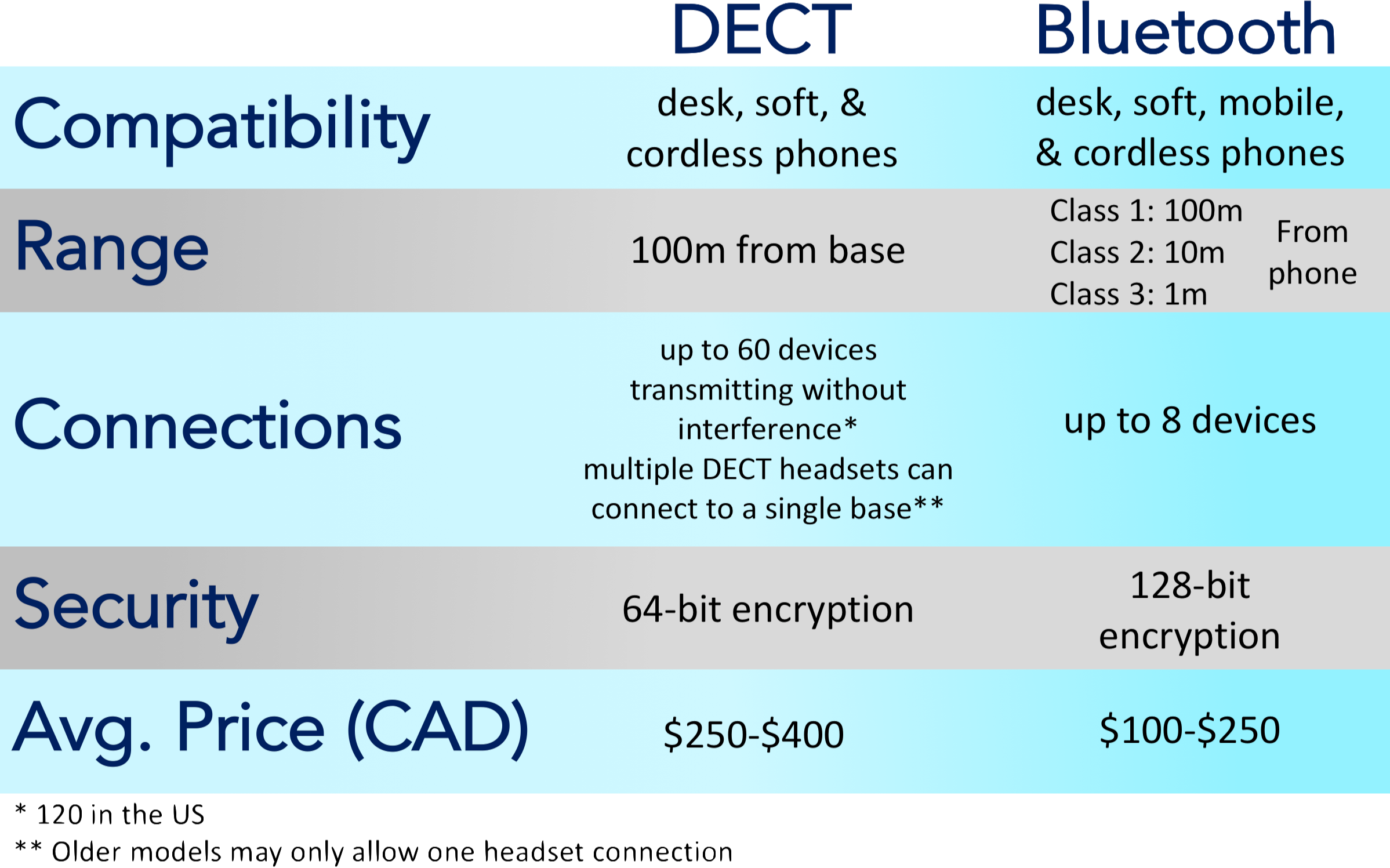You’re reading this because you have discovered the many benefits of using a headset. And with so many different options, this decision can be overwhelming. That’s why we’re here. There are two simple ways to find your perfect headset:
- If you know the model of your desk phone and want to quickly find a headset that is compatible, you can use our compatibility bundler.
- Alternatively, this article will give you the insight you need to find the right headset for your business.
Choose the Right Headset for your Office or Call Center
The first choice you will need to make is between wired and wireless. In short, wired headsets are the less expensive, practical solution, whereas wireless headsets are a considerably more expensive option but they remove wires that can interfere with daily work tasks. Wireless headsets also provide the possibility to answer calls away from the desk with either a Remote Handset Lifter or an Electronics Hookswtich.
The two options come with their own advantages and disadvantages:

Wired headsets are practically maintenance free whereas wireless headsets must be charged and can require battery replacements. Also, there is no limit on how many wired headsets can be used in a given office space. The same cannot be said for their wireless counterpart. As a rule of thumb, 60 wireless units will work without an issue. Should your needs call for more wireless headsets then you must select a wireless headset solution that can reduce the range of the signal to allow as many as double the supposed maximum in a given area/office (120 wireless headsets!). Only once you exceed this threshold should you call us to discuss your best options.
If a wireless headset solution suits your needs, then you must choose your wireless technology: DECT (Digital Enhanced Cordless Communication), Bluetooth, or both. DECT has a range of 100m (330ft) and runs on a 1.9GHz private frequency. This way, you can connect numerous DECT headsets without worrying about interference with other electronics. In contrast, bluetooth-enabled devices transmit on the common 2.4GHz frequency and are come in classes ‘1’, ‘2’, and ‘3’, offering 100m, 10m and 1m ranges, respectively. Since Bluetooth operates on 2.4GHz (the same frequency as many other devices) it can become vulnerable to interference should you have too many wireless connections/signals in your office space.
Bluetooth headsets are recommended for people that are on-the-move or need a headset for their cell phone. DECT is classically the choice for those who wouldn’t leave the office much during the day (or at all) but require the freedom to move within- all while being hooked up to a headset. On small scales, Bluetooth technologies can serve the same purpose as DECT systems and both work well. But on larger scales, bluetooth interference becomes an issue and DECT solutions are a better choice. The general rule goes: DECT in-office and bluetooth on-the-go. Some great class 1 Bluetooth options are just being released, like the Jabra Motion Office!
For those who need to be connected to a desk, pc, and mobile phone in the office, there are 3-in-1 options for you. This new technology uses a combined DECT/Bluetooth configuration, in a single headset and base. We recommend the Plantronics Savi 745 3-way Connectivity Headset!
Now you should have a good idea of what it is you want your headset to do, and all that’s left to decide is the wearing style. This is a vital piece in your decision; you want your headset to serve your personal preference and desired functionality. There are four basic options:
| Over-the-head Monaural | Binaural | Earhook | Modular |
|---|---|---|---|
| The most popular option. Covers a single ear. The adjustable headbands can be worn comfortably by the majority of users. | Covers both ears. Reduces background noise, enabling the user to concentrate on their calls (ideal for open-concept offices). | Hard to fit the majority of users comfortably since ear shape & size varies. Also, the noise cancellation feature of in-ear and ear-hook designs is typically not as effective as over-the-head designs due to a shorter microphone boomarm. | Provides both an ear option and an over-the-head option. If you are really unsure this design is a safe bet. |



